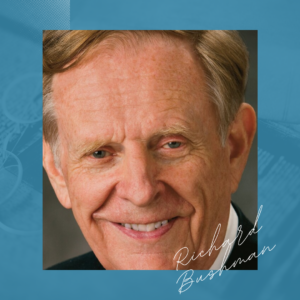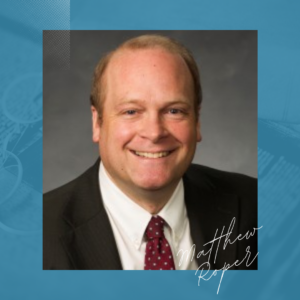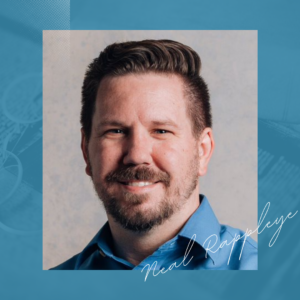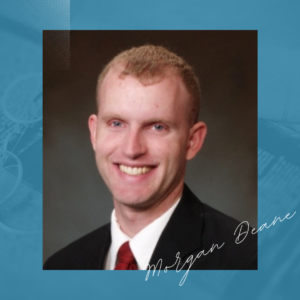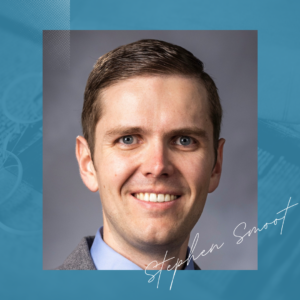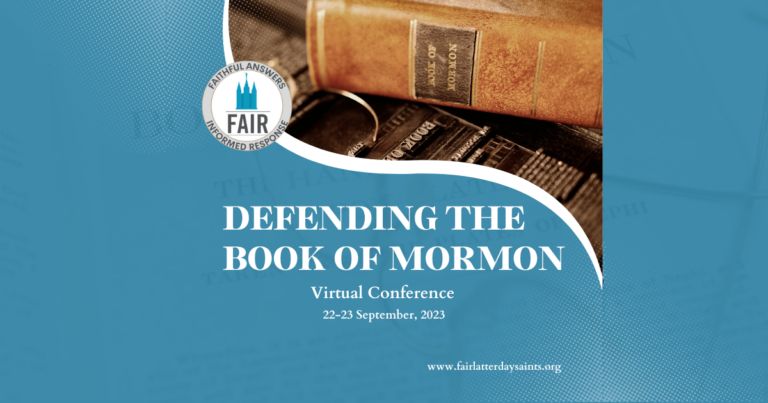
Program and Abstracts
All of the presentations are now available on our YouTube channel.
Friday, September 22, 7:00 PM: Evening Session
All times are Mountain Daylight Time.
Session Chair: Scott Gordon
7:00 PM MDT Welcome & opening prayer
7:15 PM Richard Bushman
Joseph Smith’s Gold Plates: A Cultural History
Discussant and Closing: Scott Gordon
Saturday, September 23, 10:00 AM: First Session, Saturday
Session Chair:
9:45 AM Welcome & opening prayer
10:00 AM Matthew Roper –
The Book of Mormon and Archaeology Challenges: Questions and Perspectives
10:30 AM Joshua Gehly –
The Cross of Christ and Golden Plates – Using an Established Historical Method to Authenticate Ancient Artifacts
11:00 AM Neal Rappleye –
“Written Upon Gold Plates” – Comparing Witness Descriptions with Artifacts from the Pre-Modern World
Discussant and Closing:
11:45 AM Break for lunch
Session Chair:
1:00 PM Morgan Deane –
Greater Portion of the Word: The Decisive Book of Mormon in the Debates on War and Peace
1:30 PM Brent Schmidt –
The Restoration of Relational Grace Through the Book of Mormon
2:00 PM Spencer R. Marsh and Spencer Kraus –
The Lehites’ God-Imposed Affliction by the Red Sea: A New Solution to the Puzzling 2 Nephi 19:1
Discussant and Closing:
2:45 PM afternoon break
Session Chair:
3:00 PM Charles Dike –
Observations on Jaredite Ships and Travel to the Promised Land, A Peculiar Journey
3:30 PM Jacob Billings –
All things denote there is a God: Lehi’s discourse on natural theology in 2nd Nephi 2
4:00 PM Stephen Smoot –
Is the Book of Mormon a “Translation” or a “Revelation”?
Discussant and Closing remarks:
Richard Bushman
Richard Lyman Bushman is Gouverneur Morris Professor Emeritus of History at Columbia University and the author of many books, including Joseph Smith: Rough Stone Rolling and Mormonism: A Very Short Introduction. He has received fellowships from the American Council of Learned Societies, the Charles Warren Center, the John Simon Guggenheim Foundation, the National Endowment for the Humanities, the Huntington Library, the Shelby Cullom Davis Center, and the American Antiquarian Society. He co-founded and is chairman of the Board of the Center for Latter-day Saint Arts.
Joseph Smith’s Gold Plates: A Cultural History
Matthew Roper
Matthew Roper (MA Brigham Young University) has been a research scholar at the Neal A. Maxwell Institute for Religious Scholarship and is currently a researcher and writer at Scripture Central. He has published in Literary and Linguistic Computing, BYU Studies Quarterly, Mormon Studies Review, and the Journal of Book of Mormon Studies.
The Book of Mormon and Archaeology: Challenges and Perspectives
Abstract
Questions relating to archaeology and the Book of Mormon can sometimes pose challenges to readers. On the one hand critics sometimes frame the evidence as one that is almost entirely hostile to the belief that the Book may be an authentic historical record. On the other hand, Latter-day Saints may sometimes entertain unrealistic expectations about what archaeological information can or cannot say about the text. In this presentation I will discuss several challenges that archaeologists face in addressing questions about the archaeology of animal and human remains, ancient weapons, metals, chariots, and lost scripts. An understanding of these challenges can help us to correct mistaken assumptions, adjust our expectations, and provide clearer perspectives as we seek for better information as well as answers.
Josh Gehly
Joshua Gehly is an ordained Evangelist of The Church of Jesus Christ—headquartered in Monongahela, Pennsylvania—and has preached the everlasting gospel of Jesus Christ domestically, on indigenous reservations and on multiple continents. He independently hosts and produces the Book of Mormon History Podcast, which interviews scholars about the Book of Mormon in order to provide easy access to current research for personal study. He has presented lectures regarding the historicity of the Book of Mormon to many different religious affiliations both within and outside the Restoration Movement.
Joshua recently authored Witnessing Miracles: Historical Evidence for the Resurrection and the Book of Mormon—an Amazon #1 New Release in Christian Apologetics. His book investigated and compared the evidence for the two most impactful miracles from the past two thousand years utilizing an already established, strict historical method. This groundbreaking new approach to the Book of Mormon and eyewitnesses to the golden plates has been featured on several popular podcast platforms and interfaith discourses.
Joshua graduated with a Bachelor of Science in Archaeological Science from Penn State University as an Evans Scholar and two-time Carleton Blunt Scholarship Award recipient. To watch one of Joshua’s presentations or listen to his podcast please visit: www.BookofMormonHistory.com. For more information about Joshua’s church—The Church of Jesus Christ—please visit: www.TheChurchofJesusChrist.org.
The Cross of Christ and Golden Plates – Using an Established Historical Method to Authenticate Ancient Artifacts
Abstract
The crucifixion of Jesus Christ is an undisputed event from history, which makes the cross of Calvary a real artifact from antiquity. What pattern of evidence unites both secular and believing scholars who assert the reality of a wooden cross without any physical, archaeological evidence? Researchers depend upon early source manuscripts to unlock the historical truths for what befell Jesus of Nazareth. The same approach yields compelling results for another undiscovered relic besides the cross: the golden plates procured by Joseph Smith, Jr. Cross-examining source evidence for the golden plates under the same historical method—a minimal facts approach to infer the best explanation of the facts—determines that Joseph Smith, Jr. did, in fact, obtain an ancient record and have it in his possession. A real cross does not guarantee a resurrection and a historian might not conclude the golden plates were translated by the gift and power of God, but this investigative approach points sincere seekers to a core truth. The golden plates are a genuine artifact—as real as the cross of Calvary—even if never seen by another human in the 20th or 21st centuries. The plates shine forth under the pressures of a strict historical method. This illuminates a new pathway for further investigation into the historicity of the restoration utilizing established resurrection research techniques.
Neal Rappleye
Neal Rappleye is a research project manager for Scripture Central. He is involved in ongoing research on many facets of the Book of Mormon’s historical context, including ancient Israel, ancient Arabia, and the ancient Near East more broadly, as well as pre-Columbian Mesoamerica and the nineteenth-century witnesses to the discovery and translation of the Book of Mormon plates. He has published with BYU Studies, the Interpreter Foundation, Book of Mormon Central, Greg Kofford Books, and Covenant Communications.
“Written Upon Gold Plates” – Comparing Witness Descriptions with Artifacts from the Pre-Modern World
Abstract:
The eyewitness testimony makes it virtually indisputable that Joseph Smith had a real set of metal plates, a fact that even skeptical scholars have accepted. Likewise, the practice of writing on metal plates in antiquity is well-known, as thousands of ancient metal documents have been discovered. But some still raise questions about whether the Book of Mormon plates are consistent with known ancient examples, and hypothesize that Joseph made a fake set of plates to fool his followers. To address this issue, I compare the descriptions of the plates given by the witnesses (both official and unofficial) who saw and/or handled the plates for themselves with authentic metal plates and other artifacts from the ancient and medieval worlds. Features such as their appearance, how they were bound and sealed, the size of both individual plates and the bound set, and the characters said to be on the plates can be directly compared with real-world examples of pre-modern inscriptions, metal plates, and other metallic artifacts. While there is no single artifact that directly compares with the Book of Mormon plates, every detail has precedent and is within the scope of practices and capabilities of pre-modern peoples. In contrast, it would have been difficult for someone unskilled in metallurgy (such as Joseph Smith) to create a fake set of plates consistent with the specifications provided by the witnesses. As such, it seems likely that the witnesses were describing a real, tangible, ancient artifact that they saw and handled. This comparative study of the metal plates with known ancient artifacts also helps us deepen our appreciation for the expensive and labor-intensive process that real ancient people endured to create the plates and then painstakingly engrave their record for our benefit today.
Morgan Deane
Morgan Deane is a free-lance writer, military historian, and former US Marine. He earned history degrees from Southern Virginia and Norwich University and studied Chinese military history at Kings College London. He has authored numerous books and articles on a variety of topics ranging from ancient history to the Russian invasion of Ukraine. But his passion remains the Book of Mormon and his latest manuscript explores the interactions between the Book of Mormon and Just War Theory.
Greater Portion of the Word: The Decisive Book of Mormon in the Debates on War and Peace
Abstract
As a relatively new major scripture, the Book of Mormon is often neglected in a discussion about the principles of just war. LDS scholars haven’t helped by rarely engaging with seminal just war thinkers. Their engagement usually becomes a perfunctory review that serves as a platform for dismissing just war theories and theorists as insufficient in favor of their preferred theories and handful of proof texts, or because of a chauvinistic attitude that disregards non restoration texts. This is tragic because of the Lord’s command to seek ye out of the best books [and] words of wisdom (D&C 88:118). And because the Book of Mormon doesn’t simply show congruency with just war beliefs but offers important commentary and insights about those theories. In contrast to just war theorists who had to discern their insights through expertly reasoned, but still extra Biblical theorizing, insights from the Book of Mormon come within holy text and thus should assume stronger importance. Studying the Book of Mormon’s interactions with just war theory shows how the Book of Mormon conclusively resolves a seeming contradiction regarding how a soldier with a peaceful heart can wield the sword and be a peacemaker (or renounce war). This, in turn, forms a much stronger foundational outlook regarding war and peace.
Brent J. Schmidt
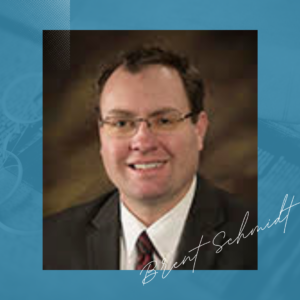 Brent J. Schmidt earned degrees in history and classics from the University of Utah and a Ph.D. in classics from the University of Colorado-Boulder. He teaches in the religion and humanities departments at BYU-Idaho. He specialized in Greek and Latin moralistic literature and he wrote and later published his dissertation on ancient utopian communities. He has published works on Biblical subjects including word studies about grace and faith. He is an author and editor of the BYU New Testament Commentary series. He enjoys reading, especially the Book of Mormon and Bible, gardening, collecting ancient coins, world travel, skiing and learning ancient and modern languages. For fifteen years now he has read at least one academic book a day. He and his wife, Judith, are the parents of one son.
Brent J. Schmidt earned degrees in history and classics from the University of Utah and a Ph.D. in classics from the University of Colorado-Boulder. He teaches in the religion and humanities departments at BYU-Idaho. He specialized in Greek and Latin moralistic literature and he wrote and later published his dissertation on ancient utopian communities. He has published works on Biblical subjects including word studies about grace and faith. He is an author and editor of the BYU New Testament Commentary series. He enjoys reading, especially the Book of Mormon and Bible, gardening, collecting ancient coins, world travel, skiing and learning ancient and modern languages. For fifteen years now he has read at least one academic book a day. He and his wife, Judith, are the parents of one son.
The Restoration of Relational Grace Through the Book of Mormon
Abstract
While most modern Christian theologians have concluded that grace is an unconditional pass guaranteeing salvation or a mystical abstraction, few know that the principle of grace (hen: Hebrew or charis: Greek=a gift) was relational in antiquity. Unfortunately, the active, relational, covenantal nuances of grace (hen and charis) were lost during the apostasy but were remarkably restored in the Book of Mormon. Grace (hen/charis)was an obliging, reciprocal and relational gift in its original, Mediterranean context. Ancient, archaic Greek and Hebrew writers in 600 BC conventionally expected to form a relationship with others by gift-giving and thereby expected to create a binding relationship of future gift-giving in return. Archaic gift-giving forged alliances and covenants and inspired later rounds of gift-giving in the Near East that gradually empowered both the giver and the recipient. However, in late-antiquity and during the Reformation, Christian intellectuals transformed this covenant-inspiring gift of grace into an emotional, one-directional freebie that allegedly provided immediate salvation. In contrast, the Book of Mormon clarifies that God’s grace encourages action, invites, obliges, enables and empowers disciples to restore broken covenant relationships and thereby become like Heavenly Father because of His Son’s obliging, atoning gift.
Spencer Kraus
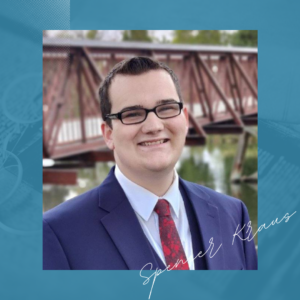 Spencer Kraus is a student at Brigham Young University majoring in Computer Science and minoring in modern Hebrew and Ancient Near Eastern Studies. He works with Scripture Central as a research associate and also as a research assistant for Lincoln Blumell studying early Christianity and the Greek New Testament.
Spencer Kraus is a student at Brigham Young University majoring in Computer Science and minoring in modern Hebrew and Ancient Near Eastern Studies. He works with Scripture Central as a research associate and also as a research assistant for Lincoln Blumell studying early Christianity and the Greek New Testament.
presenting with Spencer Marsh
Spencer R. Marsh
 Spencer R. Marsh graduated from Brigham Young University with a Bachelor’s Degree in philosophy and a minor in business. Spencer has plans to pursue graduate studies in law and business. He has done extensive volunteer writing and producing for organizations such as Scripture Central, The Interpreter Foundation, and FAIR.
Spencer R. Marsh graduated from Brigham Young University with a Bachelor’s Degree in philosophy and a minor in business. Spencer has plans to pursue graduate studies in law and business. He has done extensive volunteer writing and producing for organizations such as Scripture Central, The Interpreter Foundation, and FAIR.
presenting with Spencer Kraus
The Lehites’ God-Imposed Affliction by the Red Sea: A New Solution to the Puzzling 2 Nephi 19:1
Abstract
Among the more puzzling passages in the Book of Mormon is 2 Nephi 19:1. It is a modification of Isaiah 9:1 as contained in the King James Bible. The modifications made specifically in 2 Nephi 19:1 have long been puzzling for textual critics and other students of the Book of Mormon and a point of attack among critics of Joseph Smith. Several solutions have been proposed for the questions that have arisen, but each is found wanting given various considerations regarding the historical context of both Isaiah and Nephi’s writing and the correlative correct translation of Isaiah 9:1. Any solution to “the Red Sea problem” in 2 Nephi 19:1 must account for all data presented in Isaiah 9:1 and 2 Nephi 19:1. This paper proposes a new solution that accounts for all the data.
Charles Dike
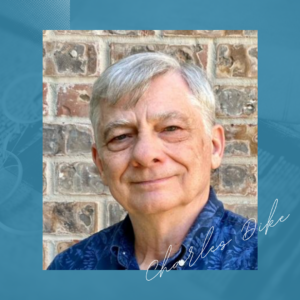 Charles Dike served in the United States Navy for six years from 1967 to 1973. Most of his service was on a submarine so he is familiar with boats that are “tight like unto a dish” and concerns with CO 2 buildup in those boats. He spent some time on a surface ship and was tossed upon the waves of the sea in storms and observed and experienced challenges involving seasickness in fairly large populations. Later he enjoyed sailing on a small dinghy with a hole in the bottom – its functionality being unfamiliar to most Book of Ether readers. After being discharged from the navy he attended BYU and received an MSEE in 1984 while researching and designing integrated circuits. After retirement in 2015 he began writing technical papers dealing primarily with the Book of Mormon. His first religiously themed published article is “A Comet, Christ’s Birth and Josephus’s Lunar Eclipse.”
Charles Dike served in the United States Navy for six years from 1967 to 1973. Most of his service was on a submarine so he is familiar with boats that are “tight like unto a dish” and concerns with CO 2 buildup in those boats. He spent some time on a surface ship and was tossed upon the waves of the sea in storms and observed and experienced challenges involving seasickness in fairly large populations. Later he enjoyed sailing on a small dinghy with a hole in the bottom – its functionality being unfamiliar to most Book of Ether readers. After being discharged from the navy he attended BYU and received an MSEE in 1984 while researching and designing integrated circuits. After retirement in 2015 he began writing technical papers dealing primarily with the Book of Mormon. His first religiously themed published article is “A Comet, Christ’s Birth and Josephus’s Lunar Eclipse.”
Observations on Jaredite Ships and Travel to the Promised Land: A Peculiar Journey
Abstract
There are a total of 42 verses in the Book of Ether which apply to this discussion. Because of the limited information provided there must needs be some speculation. The Jaredites collected seeds, swarms of bees, fowl, and live fish: this article discusses why they might do that. It is determined that these did not travel to the Americas. The fowl that made the ocean journey were likely descendants of the red jungle fowl (chickens). The Jaredites were early travelers on the Silk Road. The brother of Jared cut a hole in the bottom of an ocean-going boat. The hole is necessary to ensure a safe and healthy ocean passage. An MIT experiment demonstrates the viability of the proposed ventilation system for the boats. The psychological effect on the crews is taken into consideration and the conclusion is that the journey was made in two legs.
Jacob Billings
 Jacob Billings is an artificial intelligence engineer and computational linguist. He obtained a B.A. in Middle Eastern Studies with an emphasis on Biblical Hebrew from the University of Utah. He received an M.A. in Linguistics from Francisco Marroquin University in Guatemala City focusing on the K’iche’ Mayan language and early colonial texts of the K’iche’ Maya and early mendicant preachers. Presently, he is a Ph.D. candidate at Complutense University in Madrid, Spain, in the Department of Prehistory and Archaeology where his studies involve the use of artificial intelligence and quantitative methods to recreate Mesoamerican language families in order to trace migrations and influence throughout prehistory. He is specifically focused on the influence of Mix-Zoque-speaking people on other Mesoamerican cultures.
Jacob Billings is an artificial intelligence engineer and computational linguist. He obtained a B.A. in Middle Eastern Studies with an emphasis on Biblical Hebrew from the University of Utah. He received an M.A. in Linguistics from Francisco Marroquin University in Guatemala City focusing on the K’iche’ Mayan language and early colonial texts of the K’iche’ Maya and early mendicant preachers. Presently, he is a Ph.D. candidate at Complutense University in Madrid, Spain, in the Department of Prehistory and Archaeology where his studies involve the use of artificial intelligence and quantitative methods to recreate Mesoamerican language families in order to trace migrations and influence throughout prehistory. He is specifically focused on the influence of Mix-Zoque-speaking people on other Mesoamerican cultures.
Jacob’s academic pursuits encompass a variety of interests, including artificial intelligence algorithms within historical linguistics and epigraphy, morphosyntax in Mesoamerican and Mesopotamian languages, the linguistics of the Book of Mormon, and the early members of the LDS faith movement in the 19th century.
All things denote there is a God: Lehi’s discourse on natural theology in 2nd Nephi 2
Abstract
A common critique of religion is that there is simply no evidence to support religious claims. This stance, widely used to discredit religious arguments, questions the rationality of faith. However, within the context of the LDS tradition, the prophet Lehi’s discourse in 2nd Nephi 2 counters this skepticism by employing natural theology. Lehi’s approach relies on causality, observing motion and cause-and-effect relationships in the universe to substantiate a basis for religious belief. This contrasts revealed truth with truths derived from empirical observation.
Lehi’s discourse introduces the cosmological argument of contingency, asserting that a necessary being exists beyond the chain of contingent causes. He argues that everything contingent depends on something else infinitely, ultimately leading to a necessary cause — God — to explain existence.
Stephen O. Smoot
Stephen O. Smoot is a doctoral candidate in Semitic and Egyptian Languages and Literature at the Catholic University of America. He previously earned a master’s degree from the University of Toronto in Near and Middle Eastern Civilizations, with a concentration in Egyptology, and bachelor’s degrees from Brigham Young University in Ancient Near Eastern Studies, with a concentration in Hebrew Bible, and German Studies. He is currently an adjunct instructor of religious education at Brigham Young University and a research associate with the B. H. Roberts Foundation.
